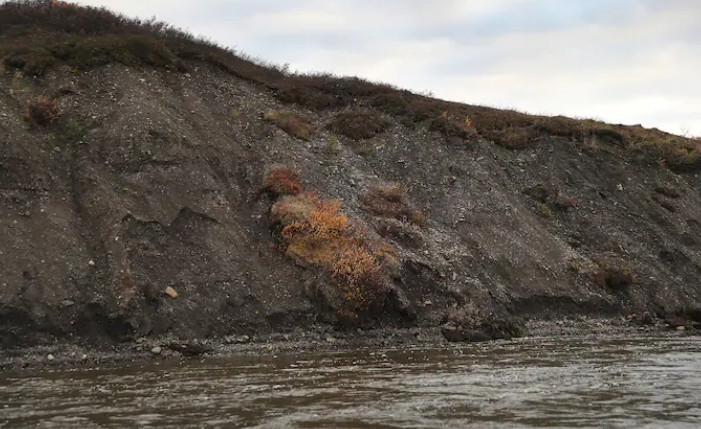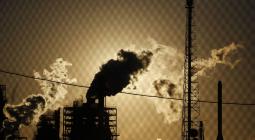U.S. has entered unprecedented climate territory, EPA warns.

The Trump administration delayed the report, which cites urban heat waves and permafrost loss as signs of global warming, for three years
For years, President Donald Trump and his deputies played down the impact of greenhouse gas emissions from burning fossil fuels and delayed the release of an Environmental Protection Agency report detailing climate-related damage. But on Wednesday, the EPA released a detailed and disturbing account of the startling changes that Earth’s warming had on parts of the United States during Trump’s presidency.
The destruction of year-round permafrost in Alaska, loss of winter ice on the Great Lakes and spike in summer heat waves in U.S. cities all signal that climate change is intensifying, the EPA said in its report. The assessment, which languished under the Trump administration for three years, marks the first time the agency has said such changes are being driven at least in part by human-caused global warming.
As it launched an updated webpage to inform the public on how climate change is upending communities throughout the country, the Biden administration gave the agency’s imprimatur to a growing body of evidence that climate effects are happening faster and becoming more extreme than when EPA last published its “Climate Indicators” data in 2016.
EPA Administrator Michael Regan said he wants to make clear to the entire country the dangers of rising temperatures in the United States.
“We want to reach people in every corner of this country because there is no small town, big city or rural community that’s unaffected by the climate crisis,” Regan told reporters Wednesday. “Americans are seeing and feeling the impacts up close with increasing regularity.”
EPA staffers said the data detail how the nation has entered unprecedented territory, in which climate effects are more visible, changing faster and becoming more extreme. Collectively, the indicators present “multiple lines of evidence that climate change is occurring now and here in the U.S., affecting public health and the environment,” the agency said.
In 2020, for example, ocean heat reached its highest level in recorded history, and it fuels marine heat waves and coral bleaching. The extent of Arctic sea ice also was the second smallest on record dating to 1979. Wildfire and pollen seasons are starting earlier and lasting longer.
The newly compiled data illustrate the chasm between the current administration and Trump’s when it comes to climate policy. President Biden has identified cutting greenhouse gas emissions linked to rising global temperatures as one of his top priorities, insisting that a shift away from fossil fuels and to cleaner forms of energy also could create needed U.S. jobs.
Trump questioned the idea that burning fossil fuels was warming the planet and endangering Americans’ lives and livelihoods, and his administration delayed an update to the EPA’s peer-reviewed report on climate change indicators, first published in 2010. As a result, the report offers a snapshot of the extent to which the science around climate change grew more detailed and robust during Trump’s term, even as his administration at times tried to stifle those findings.
In March, the Biden administration relaunched a bare-bones version of the EPA’s website on climate change, much of which went dark under Trump. The Trump administration did not take down the climate indicators page, leaving it up with outdated information. To compile its list of 54 climate change indicators released Wednesday, the EPA culled data from across academia, nonprofit institutions and other government agencies to come to its conclusions.
Heat waves are occurring about three times more often than they did in the 1960s, the agency found, averaging about six times a year. In turn, Americans are blasting air conditioners to stay cool during the hot months, which has nearly doubled summer energy use over the past half-century and added even more greenhouse gases to the atmosphere.
At nearly every spot measured in Alaska, permafrost has warmed since 1978. The biggest temperature increases were found in the northernmost reaches of the state, where the thawing of the once permanently frozen soil has made it more difficult for Native Alaskans to store wild game underground and for drillers to transport oil by pipeline.

The agency also found that coastal flooding is happening more often at all 33 spots studied up and down the Pacific, Atlantic and Gulf coasts. Older cities such as Boston, established decades before the Industrial Revolution when seas were lower, are planning to spend millions on costly coastal defenses.
Kristina Dahl, a senior climate scientist at the Union of Concerned Scientists, noted that the report draws on data published by the Centers for Disease Control and Prevention and the National Oceanic and Atmospheric Administration.
“This site does a great job of compiling a lot of indicators from a lot of different sources,” she said. “So it’s a really important clearinghouse of this kind of information.”
Despite Trump’s dismissal of climate science and his aggressive rollback of efforts aimed at reducing greenhouse gas emissions, his administration was not able to avoid releasing some official government findings about the depth of the problem.
In 2017, the Trump administration released a dire scientific report calling human activity the dominant driver of global warming, a conclusion at odds with White House decisions to withdraw from the Paris climate accord, bolster fossil fuels and reverse Obama-era climate policies.
The White House did not try to prevent the release of that report, which the government is legally required to produce every four years. But it did try to play down the report’s significance. “The climate has changed and is always changing,” a White House spokesman said at the time, noting that U.S. greenhouse gas emissions from energy consumption had declined.
The following year, the Trump administration also allowed the release of a long-awaited update, written by experts at more than a dozen federal agencies, which found that the effects of climate change were intensifying — from deadly wildfires in the West to increasingly destructive hurricanes and heat waves. That congressionally mandated report stretched to more than 1,000 pages and warned that global warming “is transforming where and how we live and presents growing challenges to human health and quality of life, the economy, and the natural systems that support us.”
The White House chose to release those findings on the day after Thanksgiving — typically one of the slowest news days of the year.
While the EPA’s report does not make projections into the future, it suggests disastrous times ahead if the United States and other industrialized nations do not act quickly on global warming.
12 May 2021
THE WASHINGTON POST




